 我们消灭了多少植物?
我们消灭了多少植物?
正文翻译
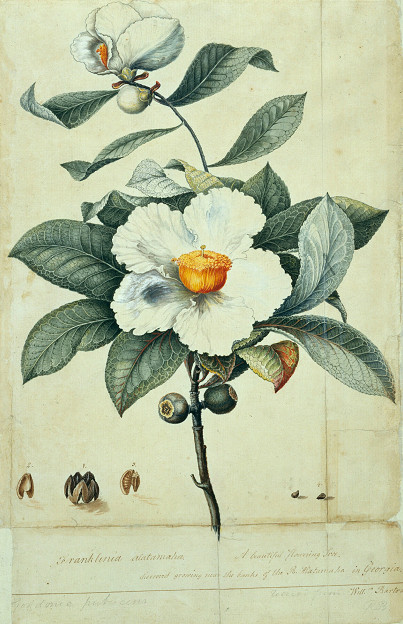
The Franklinia tree, discovered by John Bartram, King George III’s botanist, and his son, William, in Georgia in 1765, has not been seen in the wild since 1803.Credit...The Natural History Museum, London
1765年,英王乔治三世的植物学家约翰·巴特拉姆和他的儿子威廉在乔治亚州发现了富兰克林树,自1803年以来就没有在野外发现过。图片来自伦敦自然历史博物馆。
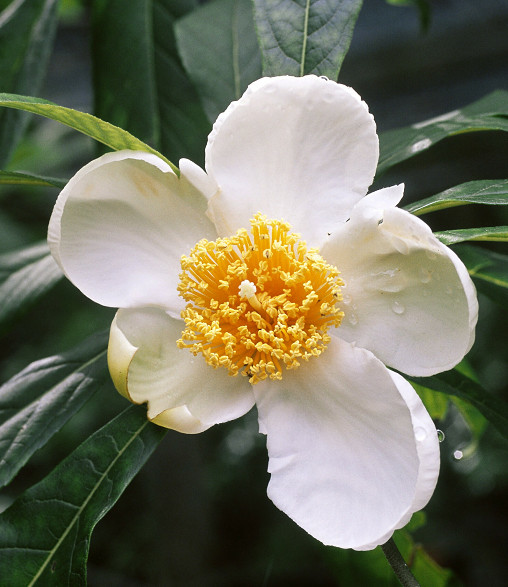
Franklinia alatamaha, extinct in nature, can still be found in arboretums and botanical gardens.Credit...
在自然界已经灭绝的富兰克林树,现在仍然可以在(供科研用的)树木园和植物园中找到。

Marshallia grandiflora
Marshallia大花
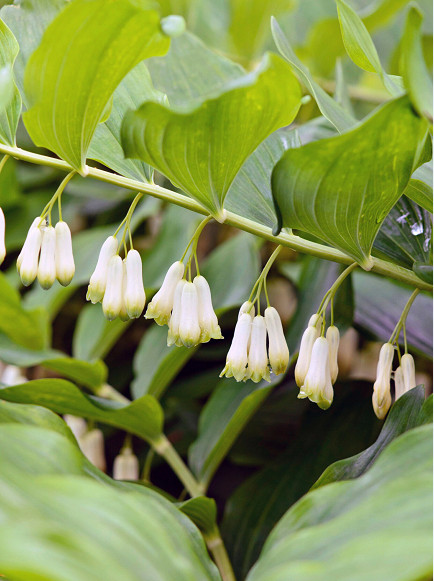
Scientists disagree on whether the melleum variety, last collected in 1930, differs enough from other Solomon’s seals to be categorized separately.
最近一次收集于1930年的小海豹花变种,与其他的所罗门海豹花是否有足够的不同,科学家们对此意见不一。
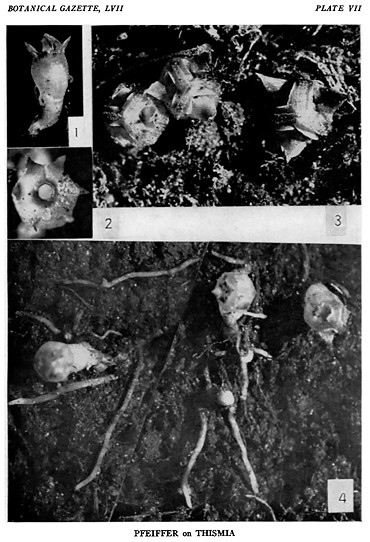
A page from the University of Chicago’s Botanical Gazette, from 1914, with Norma E. Pfeiffer’s photos of Thismia americana.
《芝加哥大学植物学公报》1914年的一页,上面有诺玛·菲佛拍摄的这种美洲水玉杯属的照片。
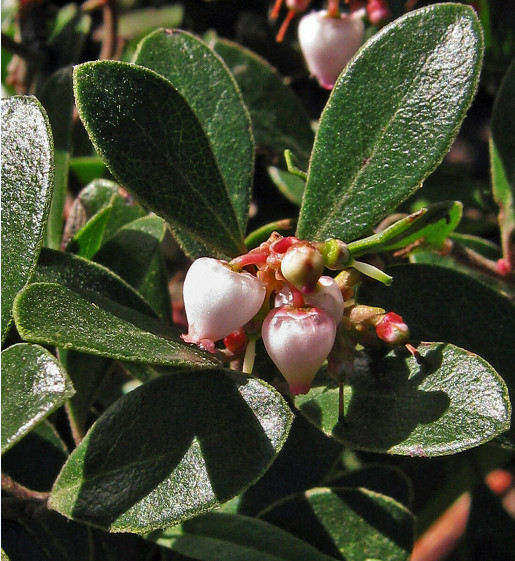
Franciscan manzanita, still cultivated in protected spaces, is extinct in the wild.
方济会曼萨尼塔仍在受保护的地区种植,但在野外已经灭绝了。
Botanists have laid out evidence that dozens of North American trees, herbs, plants and shrubs have gone extinct since European settlers arrived.
植物学家已经拿出证据证明,自从欧洲殖民者来到北美,几十种树木、草药、植物和灌木已经灭绝。
植物学家已经拿出证据证明,自从欧洲殖民者来到北美,几十种树木、草药、植物和灌木已经灭绝。

The Franklinia tree, discovered by John Bartram, King George III’s botanist, and his son, William, in Georgia in 1765, has not been seen in the wild since 1803.Credit...The Natural History Museum, London
1765年,英王乔治三世的植物学家约翰·巴特拉姆和他的儿子威廉在乔治亚州发现了富兰克林树,自1803年以来就没有在野外发现过。图片来自伦敦自然历史博物馆。
It isn’t easy to say that anything has truly “gone extinct.”
For starters, an untold number of creatures — especially teensy, nocturnal or otherwise cryptic ones — have vanished before humans ever noticed them.
要说有什么东西真的“灭绝了”并不容易。
首先,无数的生物——尤其是微小的、夜行性的或其他神秘的生物——在人类注意到它们之前就已经消失了。
For starters, an untold number of creatures — especially teensy, nocturnal or otherwise cryptic ones — have vanished before humans ever noticed them.
要说有什么东西真的“灭绝了”并不容易。
首先,无数的生物——尤其是微小的、夜行性的或其他神秘的生物——在人类注意到它们之前就已经消失了。
Once biologists suspect a documented species’ extinction, the challenge shifts to proving whether it has disappeared forever, or just disappeared from sight.
一旦生物学家怀疑一个有记录的物种灭绝,挑战就转移到证明它是永远消失了,还是从人们的视线中消失了。
一旦生物学家怀疑一个有记录的物种灭绝,挑战就转移到证明它是永远消失了,还是从人们的视线中消失了。
Even when scientists are 99 percent certain something is gone, they may never know whether pathogens, habitat disturbance, invasive species, climate change or some other force drove them out of existence.
即使科学家有99%的把握,他们可能永远也不知道是病原体、栖息地干扰、入侵物种、气候变化或其他力量导致了它们的消失。
即使科学家有99%的把握,他们可能永远也不知道是病原体、栖息地干扰、入侵物种、气候变化或其他力量导致了它们的消失。
“There’s a sense that we’ve got it down — that we know our flora and we know what’s extinct,” said Anne Frances, the lead botanist for NatureServe, which promotes wildlife conservation. That belief couldn’t be further from the truth, she said.
促进野生动物保护的自然保护区的首席植物学家安妮·弗朗西丝说:“有一种感觉是我们已经掌握了它——我们知道我们的植物群,我们知道什么已经灭绝了。”她说,这种信念与事实相差甚远。
促进野生动物保护的自然保护区的首席植物学家安妮·弗朗西丝说:“有一种感觉是我们已经掌握了它——我们知道我们的植物群,我们知道什么已经灭绝了。”她说,这种信念与事实相差甚远。
In a study published in August in Conservation Biology, Dr. Frances and 15 other researchers from across the United States quantified how many trees, shrubs, herbs and flowering plants have vanished from North America since European settlement. After compiling existing information on presumed extinct species and working with local botanists to vet the data, the group narrowed down a list of 65 plant species, subspecies and varieties that have been lost forever in the wild.
在今年8月发表在《保护生物学》杂志上的一项研究中,弗朗西丝博士和来自美国各地的其他15名研究人员量化了自欧洲人定居北美以来,有多少树木、灌木、草药和开花植物在北美消失了。在整理了关于已经灭绝的物种的现有信息,并与当地植物学家合作对数据进行审查后,该小组缩小了在野外永远消失的65种植物、亚种和变种的范围。
在今年8月发表在《保护生物学》杂志上的一项研究中,弗朗西丝博士和来自美国各地的其他15名研究人员量化了自欧洲人定居北美以来,有多少树木、灌木、草药和开花植物在北美消失了。在整理了关于已经灭绝的物种的现有信息,并与当地植物学家合作对数据进行审查后,该小组缩小了在野外永远消失的65种植物、亚种和变种的范围。
That figure is almost certainly an underestimate, said Wes Knapp, a botanist at the North Carolina Natural Heritage Program and a co-author of the study.
几乎可以肯定,这个数字被低估了,韦斯纳普说,他是北卡罗来纳州自然遗产项目(North Carolina Natural Heritage Program)的植物学家,也是这项研究的合著者。
几乎可以肯定,这个数字被低估了,韦斯纳普说,他是北卡罗来纳州自然遗产项目(North Carolina Natural Heritage Program)的植物学家,也是这项研究的合著者。
“That 65 is not rock solid,” he said. “We’re still documenting what’s on the ground, and you can never really prove a hypothesis like ‘extinct.’”
他说:“65种这个数字并不可靠。”“我们仍在记录地面上的情况,你永远无法真正证明‘灭绝’这样的假设。”
他说:“65种这个数字并不可靠。”“我们仍在记录地面上的情况,你永远无法真正证明‘灭绝’这样的假设。”
After all, scientists rediscover extinct species all the time, as well as uncover secret extinctions hidden in natural history museum collections.
毕竟,科学家们一直在重新发现灭绝的物种,也在揭开自然历史博物馆藏品中隐藏的绝种秘密。
毕竟,科学家们一直在重新发现灭绝的物种,也在揭开自然历史博物馆藏品中隐藏的绝种秘密。
“Humans like to put things into neat categories, but nature doesn’t present itself that way,” Dr. Frances said. “Every plant on this list is its own little mystery.”
“人类喜欢把事物简单地分类,但大自然并不是这样表现的,”弗朗西丝博士说。“这个名单上的每一种植物都有自己的小秘密。”
原创翻译:龙腾网 http://www.ltaaa.cn 转载请注明出处
“人类喜欢把事物简单地分类,但大自然并不是这样表现的,”弗朗西丝博士说。“这个名单上的每一种植物都有自己的小秘密。”
原创翻译:龙腾网 http://www.ltaaa.cn 转载请注明出处
Franklinia Tree
富兰克林树
富兰克林树

Franklinia alatamaha, extinct in nature, can still be found in arboretums and botanical gardens.Credit...
在自然界已经灭绝的富兰克林树,现在仍然可以在(供科研用的)树木园和植物园中找到。
Despite the fact that it’s extinct, you could reasonably venture upon Franklinia alatamaha.
尽管事实上它已经灭绝了,你仍然可以碰运气去找富兰克林树。
原创翻译:龙腾网 http://www.ltaaa.cn 转载请注明出处
尽管事实上它已经灭绝了,你仍然可以碰运气去找富兰克林树。
原创翻译:龙腾网 http://www.ltaaa.cn 转载请注明出处
Considered “extinct in the wild,” the Franklinia tree — along with six other plants listed in the recent study — now exists only in cultivated spaces such as arboretums or botanical gardens.
被认为“在野外已经灭绝”的富兰克林树,以及最近研究中列出的其他六种植物,现在只存在于人工种植的地方,如树木园或植物园。
被认为“在野外已经灭绝”的富兰克林树,以及最近研究中列出的其他六种植物,现在只存在于人工种植的地方,如树木园或植物园。
John Bartram, King George III’s botanist in the Americas, and his son William first described the species (and named it for family friend Benjamin Franklin) after stumbling upon the unfamiliar tree along Georgia’s Altamaha River in 1765.
乔治三世在美洲的植物学家约翰·巴特拉姆,和他的儿子威廉第一次描述了这个物种(并以家族朋友本杰明·富兰克林的名字命名),他们在1765年在乔治亚州的阿尔塔马哈河畔偶然发现了这种不熟悉的树。
乔治三世在美洲的植物学家约翰·巴特拉姆,和他的儿子威廉第一次描述了这个物种(并以家族朋友本杰明·富兰克林的名字命名),他们在1765年在乔治亚州的阿尔塔马哈河畔偶然发现了这种不熟悉的树。
In a lucky twist, the younger Mr. Bartram returned a few years later to collect seeds and cuttings, and brought them to Philadelphia where the first cultivated Franklinia tree bloomed in 1781. Within a quarter-century, in 1803, the species was spotted in the wild for the last time.
幸运的是,年轻的巴特拉姆几年后回来收集种子和插枝,并把它们带到费城,1781年,第一棵人工培育的富兰克林树在那里开花。四分之一个世纪后,也就是1803年,该物种最后一次在野外被发现。
原创翻译:龙腾网 http://www.ltaaa.cn 转载请注明出处
幸运的是,年轻的巴特拉姆几年后回来收集种子和插枝,并把它们带到费城,1781年,第一棵人工培育的富兰克林树在那里开花。四分之一个世纪后,也就是1803年,该物种最后一次在野外被发现。
原创翻译:龙腾网 http://www.ltaaa.cn 转载请注明出处
Today, any Franklinia trees you might encounter in cemeteries, gardens and parks are descendants of Mr. Bartram’s cultivations. “It wasn’t meant to prevent extinction,” Mr. Knapp said, “but it did.”
如今,你在墓地、花园和公园里见到的任何富兰克林树,都是巴特拉姆培植的后代。“这并不是为了防止物种灭绝,”纳普说,“但事实上发挥了这样的作用。”
如今,你在墓地、花园和公园里见到的任何富兰克林树,都是巴特拉姆培植的后代。“这并不是为了防止物种灭绝,”纳普说,“但事实上发挥了这样的作用。”
It’s unclear how the tree disappeared, though some have suggested a soil-borne cotton pathogen, over-collection by nurseries or a change in regional fire frequency could have played a role in its demise.
目前还不清楚这种树是如何消失的,不过一些人认为是土壤传播的棉花病原体、苗圃的过度采集或地区火灾频率的变化导致了它的死亡。
目前还不清楚这种树是如何消失的,不过一些人认为是土壤传播的棉花病原体、苗圃的过度采集或地区火灾频率的变化导致了它的死亡。
“What we have is conjecture. We really have no idea why it’s gone,” Mr. Knapp said. “But you can buy it if you go to the right place.”
“我们有的只是猜测。我们真的不知道它为什么不见了,”纳普说。“但如果你去对了地方,就能看到。”
“我们有的只是猜测。我们真的不知道它为什么不见了,”纳普说。“但如果你去对了地方,就能看到。”
Large-flowered Barbara’s-buttons
芭芭拉钮扣大花
原创翻译:龙腾网 http://www.ltaaa.cn 转载请注明出处
芭芭拉钮扣大花
原创翻译:龙腾网 http://www.ltaaa.cn 转载请注明出处

Marshallia grandiflora
Marshallia大花
How do you lose a 3-foot-tall daisy forever? By mistaking it for a different flower.
你怎么能永远失去一只3英尺高的菊科植物呢?误以为是另一朵花。
原创翻译:龙腾网 http://www.ltaaa.cn 转载请注明出处
你怎么能永远失去一只3英尺高的菊科植物呢?误以为是另一朵花。
原创翻译:龙腾网 http://www.ltaaa.cn 转载请注明出处
At least, that’s what happened to Marshallia grandiflora, a large flowering plant last collected in 1919.
Native to two western counties in North Carolina, the species was, until this year, incorrectly lumped in with a different, more wide-ranging daisy.
至少,这就是发生在Marshallia大花身上的事,这是一种大型开花植物,最后一次被采集是在1919年。
这种菊科植物原产于北卡罗来纳州的两个西部郡,直到今年,这个物种还被错误地归为另一种分布更广的菊科植物。
Native to two western counties in North Carolina, the species was, until this year, incorrectly lumped in with a different, more wide-ranging daisy.
至少,这就是发生在Marshallia大花身上的事,这是一种大型开花植物,最后一次被采集是在1919年。
这种菊科植物原产于北卡罗来纳州的两个西部郡,直到今年,这个物种还被错误地归为另一种分布更广的菊科植物。
In comparing current Marshallias with older herbarium specimens, a trio of botanists noticed a remarkable size and shape difference.
在比较现存的Marshallias标本和更老的植物标本时,三位植物学家注意到一个显著的大小和形状差异。
在比较现存的Marshallias标本和更老的植物标本时,三位植物学家注意到一个显著的大小和形状差异。
By the time it was first described in June, the “new” species was long extinct, for reasons that are not known. Three other extinct plants listed in the new paper were also similarly discovered in natural history collections within the last 25 years.
到今年6月首次被发现时,这种“新”物种已经灭绝很久了,原因尚不清楚。在这篇新论文中列出的其他三种灭绝的植物,在过去的25年里也同样在自然历史收藏中被发现。
原创翻译:龙腾网 http://www.ltaaa.cn 转载请注明出处
到今年6月首次被发现时,这种“新”物种已经灭绝很久了,原因尚不清楚。在这篇新论文中列出的其他三种灭绝的植物,在过去的25年里也同样在自然历史收藏中被发现。
原创翻译:龙腾网 http://www.ltaaa.cn 转载请注明出处
“We’re still doing the basic science to untangle what the species are,” said Alan Weakley, director of the University of North Carolina, Chapel Hill’s Herbarium, and a co-author of the study. “There are undoubtedly more undescribed extinct species sitting in herbaria, collected 100 years ago.”
“我们仍在进行基础科学研究,以弄清这些物种到底是什么,”北卡罗来纳大学教堂山植物标本室主任、这项研究的合著者艾伦·威克利(Alan Weakley)说。“毫无疑问,在100年前收集的植物标本中,还有更多未被描述的灭绝物种。”
“我们仍在进行基础科学研究,以弄清这些物种到底是什么,”北卡罗来纳大学教堂山植物标本室主任、这项研究的合著者艾伦·威克利(Alan Weakley)说。“毫无疑问,在100年前收集的植物标本中,还有更多未被描述的灭绝物种。”
Small Solomon’s Seals Variety
所罗门小海豹花
所罗门小海豹花

Scientists disagree on whether the melleum variety, last collected in 1930, differs enough from other Solomon’s seals to be categorized separately.
最近一次收集于1930年的小海豹花变种,与其他的所罗门海豹花是否有足够的不同,科学家们对此意见不一。
Native Americans historically ate the young stems of Solomon’s seals, a wildflower belonging to the same family as asparagus, or cooked their starchy roots into breads and soups. Today, the species continues to be used in herbal medicine.
历史上,印第安人吃的是所罗门海豹花的嫩茎,这是一种与芦笋同科的野花,或者把它们含淀粉的根茎煮成面包和汤。今天,这个物种继续被用于草药。
历史上,印第安人吃的是所罗门海豹花的嫩茎,这是一种与芦笋同科的野花,或者把它们含淀粉的根茎煮成面包和汤。今天,这个物种继续被用于草药。
While most of small Solomon’s seal is doing just fine in the wild, one of its varieties, Polygonatum biflorum var. melleum, is presumed extinct.
虽然大多数所罗门小海豹花在野外生长得很好,但它的一个变种,红蓼变种,据推测已经灭绝了。
虽然大多数所罗门小海豹花在野外生长得很好,但它的一个变种,红蓼变种,据推测已经灭绝了。
Scientists are split on whether the melleum variety, last collected in 1930 and believed to be native to Michigan and Ontario, is distinct enough to be categorized apart from other Solomon’s seals.
最近一次收集于1930年的变种,被认为是来自密歇根和安大略省,科学家们对它是否足够明显可以与其他的所罗门海豹花区分开来存在分歧。
最近一次收集于1930年的变种,被认为是来自密歇根和安大略省,科学家们对它是否足够明显可以与其他的所罗门海豹花区分开来存在分歧。
“It’s really murky. The data argues it may or may not even be real,” Mr. Knapp said. “This is on the fringe.”
“这是很模糊的。数据表明,它可能是真变种,也可能不是,”纳普说。“一线之差。”
原创翻译:龙腾网 http://www.ltaaa.cn 转载请注明出处
“这是很模糊的。数据表明,它可能是真变种,也可能不是,”纳普说。“一线之差。”
原创翻译:龙腾网 http://www.ltaaa.cn 转载请注明出处
While the melleum variety made the cut for August’s paper, uncertainty over the existence or status of hundreds of plants left them off the list in their study.
尽管该变种在八月份的论文中被删除,但对数百种植物存在或状况的不确定性使它们不在他们的研究列表中。
原创翻译:龙腾网 http://www.ltaaa.cn 转载请注明出处
尽管该变种在八月份的论文中被删除,但对数百种植物存在或状况的不确定性使它们不在他们的研究列表中。
原创翻译:龙腾网 http://www.ltaaa.cn 转载请注明出处
Thismia
水玉杯属
水玉杯属

A page from the University of Chicago’s Botanical Gazette, from 1914, with Norma E. Pfeiffer’s photos of Thismia americana.
《芝加哥大学植物学公报》1914年的一页,上面有诺玛·菲佛拍摄的这种美洲水玉杯属的照片。
In 1912, Norma Etta Pfeiffer, a 24-year-old graduate student at the University of Chicago, made a marvelous botanical discovery near Chicago’s Lake Calumet: a truly teensy plant adorned with bead-sized flowers.
1912年,24岁的芝加哥大学研究生诺玛·埃塔·法伊弗在芝加哥的卡卢米特湖附近发现了一种神奇的植物:一种点缀着珠状花朵的非常娇小的植物。
1912年,24岁的芝加哥大学研究生诺玛·埃塔·法伊弗在芝加哥的卡卢米特湖附近发现了一种神奇的植物:一种点缀着珠状花朵的非常娇小的植物。
The plant, which she named Thismia Americana, belongs to a rare genus that lives as a parasite on subterranean fungi, stealing their energy instead of converting sunlight through photosynthesis.
她将这种植物命名为“美国文物水玉杯”(Thismia Americana),属于一种罕见的植物属,它是寄生在地下真菌上的一种植物,它会窃取真菌的能量,而不是通过光合作用转化阳光。
她将这种植物命名为“美国文物水玉杯”(Thismia Americana),属于一种罕见的植物属,它是寄生在地下真菌上的一种植物,它会窃取真菌的能量,而不是通过光合作用转化阳光。
“They’re small and cryptic and mostly underground. We don’t even know much about the ones we’ve described,” said Paul Marcum, a botanist at the Illinois Natural History Survey.
“它们很小,很神秘,大多在地下。”伊利诺斯州自然历史调查局的植物学家保罗·马库姆说。
“它们很小,很神秘,大多在地下。”伊利诺斯州自然历史调查局的植物学家保罗·马库姆说。
Like almost two out of three of the plants listed in August’s study, Thismia Americana is only ever known to have existed in one location, making it extremely vulnerable to any changes in land use.
就像8月份的研究中列出的三分之二的植物一样,这种美洲植物只存在于一个地方,这使得它极易受到土地利用变化的影响。
就像8月份的研究中列出的三分之二的植物一样,这种美洲植物只存在于一个地方,这使得它极易受到土地利用变化的影响。
Shortly after Dr. Pfeiffer found the centimeter-tall plant, industrial development destroyed the discovery site.
在菲佛博士发现这个几厘米高的植物后不久,工业发展就破坏了发现地点。
在菲佛博士发现这个几厘米高的植物后不久,工业发展就破坏了发现地点。
That hasn’t kept subsequent generations of Chicagoans from hunting for it — although Field guides for Thismia seekers offer little help: “Where to look: Honestly? Your guess is as good as ours.” The species has not been spotted since 1916.
这并没有阻止下一代芝加哥人去寻找它——尽管为寻找这种水玉杯属植物的人提供的野外指南几乎没有提供什么帮助:“去哪里找:老实说?你的猜测和我们的一样准确。”这个物种自1916年以来就没有被发现过。
这并没有阻止下一代芝加哥人去寻找它——尽管为寻找这种水玉杯属植物的人提供的野外指南几乎没有提供什么帮助:“去哪里找:老实说?你的猜测和我们的一样准确。”这个物种自1916年以来就没有被发现过。
“It’s the holy grail,” Mr. Marcum said. “I still believe it could be out there. I think somebody will be on their hands and knees searching in the soil, and get lucky.”
“它是圣杯,”马库姆说。“我仍然相信它可能存在。我想会有人手脚并用地在土里搜索,并且会被幸运之神眷顾。”
“它是圣杯,”马库姆说。“我仍然相信它可能存在。我想会有人手脚并用地在土里搜索,并且会被幸运之神眷顾。”
Franciscan Manzanita
方济会曼萨尼塔
原创翻译:龙腾网 http://www.ltaaa.cn 转载请注明出处
方济会曼萨尼塔
原创翻译:龙腾网 http://www.ltaaa.cn 转载请注明出处

Franciscan manzanita, still cultivated in protected spaces, is extinct in the wild.
方济会曼萨尼塔仍在受保护的地区种植,但在野外已经灭绝了。
The Franciscan Manzanita has endured not one, but several brushes with extinction.
这种植物经历了不止一次、而是几次灭绝。
这种植物经历了不止一次、而是几次灭绝。
The shrub species, Arctostaphylos franciscana, was presumed to be extinct in the wild for nearly 70 years, stamped out by construction in San Francisco’s Presidio park.
由于旧金山普雷西蒂奥公园的建设,这种灌木物种被认为已经在野外灭绝了近70年。
由于旧金山普雷西蒂奥公园的建设,这种灌木物种被认为已经在野外灭绝了近70年。
Then, in 2009, Daniel Gluesenkamp, now the executive director of the California Native Plant Society, stumbled upon Franciscan Manzanita in overgrown vegetation near the Golden Gate Bridge.
2009年,现任加州本土植物学会(California Native Plant Society)执行主任的丹尼尔·格莱斯森坎普在金门大桥附近杂草丛生的植被中偶然发现了方济会曼萨尼塔
2009年,现任加州本土植物学会(California Native Plant Society)执行主任的丹尼尔·格莱斯森坎普在金门大桥附近杂草丛生的植被中偶然发现了方济会曼萨尼塔
Unfortunately, the site of its rediscovery lay directly in the path of a “shovel ready” project. “The next best thing we could do was dig this thing up and move it,” Mr. Knapp said.
不幸的是,它被重新发现的地点正好位于一个“准备就绪”项目的途径之路上。“我们能做的第二件事就是把它挖出来,然后把它搬走,”克纳普先生说。
不幸的是,它被重新发现的地点正好位于一个“准备就绪”项目的途径之路上。“我们能做的第二件事就是把它挖出来,然后把它搬走,”克纳普先生说。
Conservationists relocated the shrub to a protected site and it began propagating. Like the Franklinia tree, the Franciscan Manzanita is now considered extinct in the wild.
自然资源保护主义者将这种灌木转移到一个受保护的地方,它开始繁殖。和富兰克林树一样,方济会曼萨尼塔现在被认为在野外已经灭绝。
原创翻译:龙腾网 http://www.ltaaa.cn 转载请注明出处
自然资源保护主义者将这种灌木转移到一个受保护的地方,它开始繁殖。和富兰克林树一样,方济会曼萨尼塔现在被认为在野外已经灭绝。
原创翻译:龙腾网 http://www.ltaaa.cn 转载请注明出处
“Part of me is sad that we couldn’t allow it to exist in its last remaining natural spot,” Mr. Knapp said. “It’s not a great solution, but it’s much better than being extinct.”
克纳普先生说,“我有些难过,我们不能让它在最后一个仅存的自然环境中生存。”“这不是一个很好的解决办法,但比灭绝要好得多。”
克纳普先生说,“我有些难过,我们不能让它在最后一个仅存的自然环境中生存。”“这不是一个很好的解决办法,但比灭绝要好得多。”
评论翻译
暂无
很赞 1
收藏